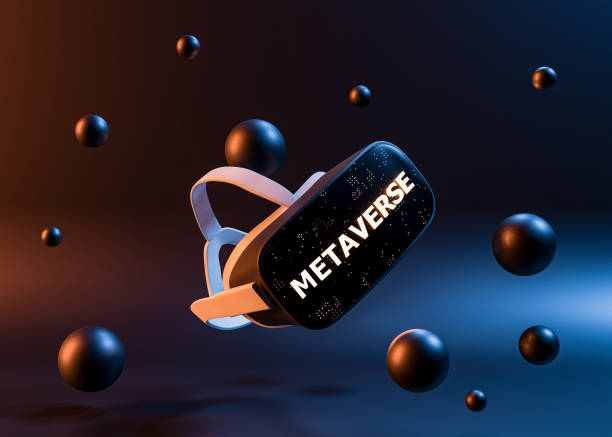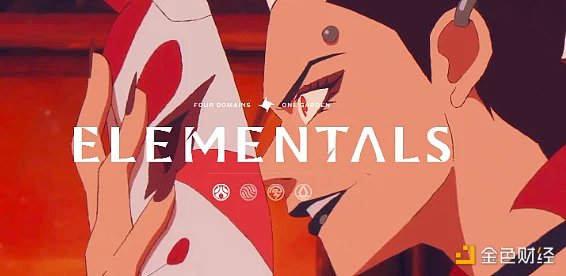Layer2 is just the beginning, Ethereum will devour all blockchains.
Layer2 is just the beginning for Ethereum's domination of all blockchains.Author: LianGuaiul Brody
Translation: Block unicorn
The global leader of EY’s blockchain division said that history has shown that all second-layer solutions will gradually migrate to Ethereum. Ethereum is devouring all blockchains, there is no doubt about it.
- Li Xiaolai endorses, Luo Yonghao invests, digging into the long-standing story behind Mixin
- Opinion Blockchain with paid usage will never achieve large-scale adoption.
- Comparing the current regulatory status of stablecoins in various countries and looking forward to future policy trends
If history is any indication, Ethereum will consume the entire blockchain industry, and Ethereum’s second-layer solutions will become Ethereum’s first-layer solution in the end. I believe that the recent decision by CELO stakeholders to transition their operations to Ethereum’s second-layer solution is just the beginning of integration and transformation, ultimately leading us to a state where Ethereum becomes the first-layer solution for all blockchains.
In the technology industry, there are ample precedents for this kind of integration. My favorite example is how a highly diverse network world gradually merged into a single global standard over a span of about 15 years.
The story of this network goes like this: a long time ago, around the dawn of human civilization (the 1970s), we had many different data networks. Various network services from different companies and governments existed, ranging from the Advanced Research Projects Agency Network (ARPA NET, the precursor to the internet) to IBM’s Systems Network Architecture (SNA), Xerox’s Internet Datagram Protocol (IDP), and many others. The result was a mess of incompatible networks that made it extremely difficult to connect business and government systems.
From Connecting Links to Global Standard
Starting from the 1970s, people began working on a protocol that could work across multiple networks and handle interruptions and changes in network operations seamlessly. This eventually led to TCP/IP, the Transmission Control Protocol/Internet Protocol. In its early days, TCP/IP did exactly what it was supposed to do: connect all these different networks.
Initially, TCP/IP was only used to connect different network standards, and it did a fantastic job at that. However, over time, the unstoppable logic of standardization and scalability turned TCP/IP from a connecting link into a global standard. IP networks swallowed up network business, and today there are hardly any non-IP networks left.
Given the tech industry’s love for standardization, it should come as no surprise if the same thing happens to blockchain networks. As the value of any network grows with interconnectivity, this approach is likely to become the lifeline for those who were boasting about being “Ethereum killers” not long ago and find themselves in a predicament where Ethereum’s first-layer solution becomes the way out.
L2 Dedicated Networks
Not all L2 (second-layer) solutions and sidechains are the same, and I’ve been thinking about the various ways this second-layer ecosystem could develop. There could be many highly specialized sub-ecosystems. For example, at EY, we see industrial companies as users of our OpsChain solution, helping them manage inventory and track carbon emissions. When we discuss scaling plans, we’re talking about a very high volume of transactions. For example, one of our clients asked us to consider how to handle 500,000 unique and serialized units of a single product line every day.
For the 500,000 units that move every day, there are an average of 3 to 4 movements between production and final consumption. We can consider an average of 2 million NFT transactions per day for a single product line. For these customers, privacy (keeping detailed business operational data confidential and not letting competitors know) and scalability are the top priorities – they need reliable high throughput and low transaction costs. It is not surprising that Nightfall, an L2 network developed and contributed to the public domain by EY, is designed to achieve this goal.
Let’s say goodbye to those cool dedicated blockchains we use today.
Financial transactions will have very different requirements for second-layer solutions. Some transactions, such as exchange transactions, may only be looking for a rolling solution with high transaction volume and low cost, while complex DeFi (decentralized finance) smart contracts also need to support networks with full Ethereum Virtual Machine (EVM) compatibility, so that smart contracts can run on the blockchain.
Moreover, I wouldn’t be surprised to see the emergence of highly specialized networks for countries, regions, or identity verification, where all participants are not only known but also identified and subject to the same regulatory rules. Imagine a second-layer solution open only to “individuals” (citizens or residents) of the United States. This would allow all these individuals to engage in various asset transactions with minimal additional verification checks, which could soon appear within the European Union or other major jurisdictions.
Interconnected value
With the emergence of all these specialized networks, you may wonder if it is necessary to connect them all through Ethereum. In addition to pure EVM compatibility, the value of interconnection lies in the ability to flow products and services from one ecosystem to another. No real, modern economic system is truly isolated. Every business contract ends with a payment, and various types of financial services support all these contracts, with financial flows between countries and ecosystems supporting all trade and investment.
Moreover, we may never be able to build a single network that can support all different types of transactions and global transaction volumes. Therefore, there will always be multiple networks, and even when connecting only between the first and second layers, there will be friction between networks. Nevertheless, using Ethereum as the first layer to connect multiple specialized networks will bring enormous benefits. For example, industrial product tokens can leave specialized manufacturing networks to come to financial-oriented second layers for payment as an exchange, but still have continuous digital records between two second-layer networks and be connected by Ethereum as the first layer, surpassing any integration in today’s business world by an order of magnitude.
One drawback of Ethereum devouring the entire world is that, similar to today’s networking industry, certain available network features will change very little. To achieve interoperability, tokens and smart contracts must essentially be the same everywhere, and every chain must be an EVM chain. Although you can have a cross-chain development system that can run on diverse ecosystems, it doesn’t help much because your tokens and smart contracts become unusable, and the unique and special features of specific networks will never actually be used.
An important lesson learned from the field of technology is that, time and time again, general-purpose infrastructure is more successful than specialized infrastructure, even if the specialized infrastructure is actually better suited for specific tasks. Before TCP/IP came to dominate the network world, there were dedicated networks specifically for voice calls. They were known as circuit-switched networks, and they could guarantee the quality of telephone calls. There were no delays, no interruptions, and no lost packets of data, just a continuous circuit connecting two telephones. In comparison, VoIP calls have significantly lower quality, but they now occupy over 99% of the market share for telephone calls.
So, let’s bid farewell to those fancy specialized blockchains we use today, I bet they will soon become history.
We will continue to update Blocking; if you have any questions or suggestions, please contact us!
Was this article helpful?
93 out of 132 found this helpful
Related articles
- Opinion The blockchain industry is transitioning from narrative logic to application logic.
- Innovation of Application Chains Can Mesh Security revitalize the Osmosis ecosystem?
- Understanding Farcaster, the decentralized social network strongly promoted by Vitalik’ OR ‘Understanding Farcaster, the decentralized social network strongly advocated by Vitalik
- Traditional institutions are eager to try, and RWA is finally taking off.
- Ghost in the Blockchain International Top Hacker Organization Steals Digital Assets Worth at Least $1 Billion
- Why build Onchain Realities?
- The Cryptographic Mars in LianGuairadigm’s Eyes Speculation, Pioneering, and Gambling Tables on the Blockchain






